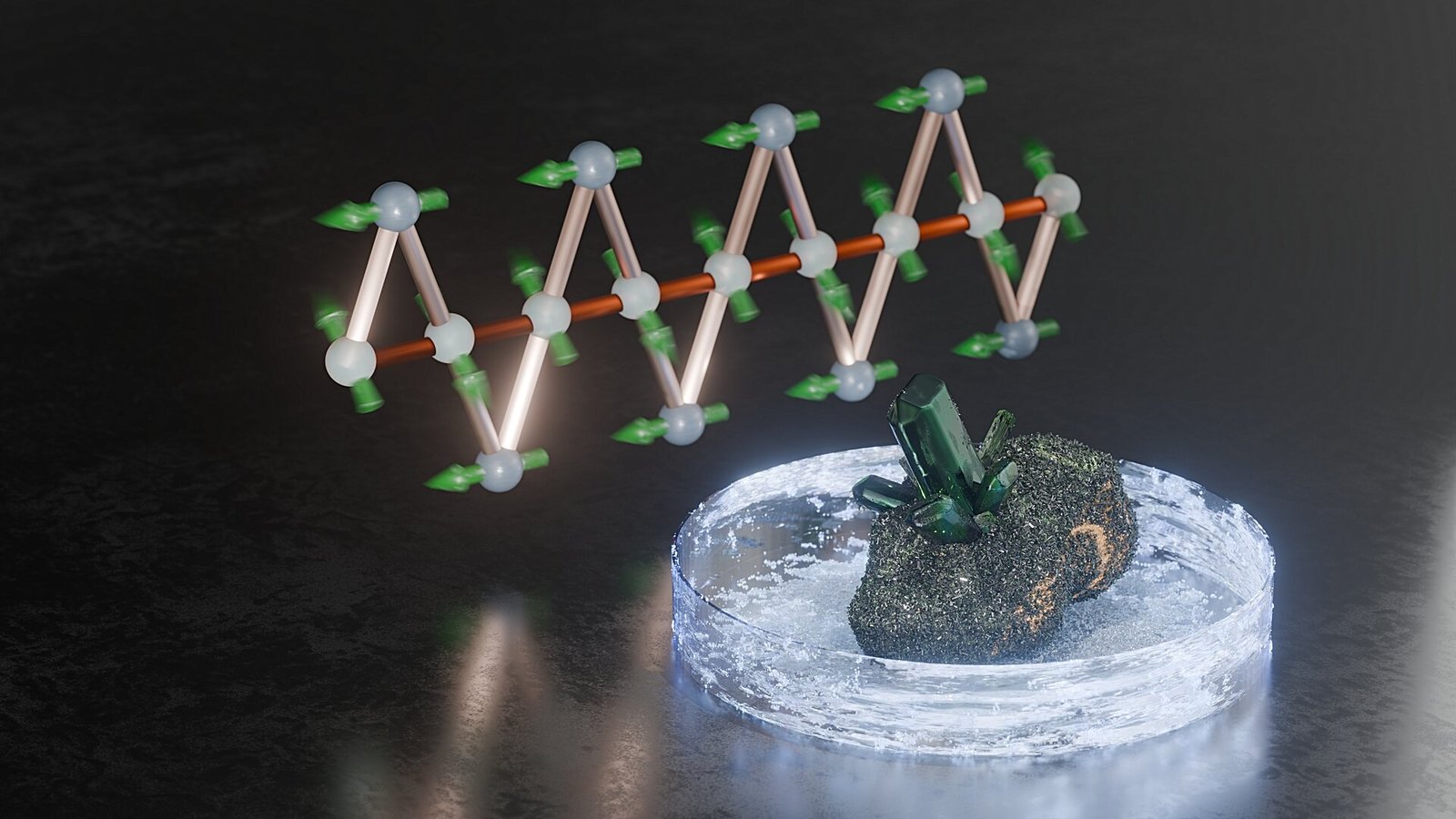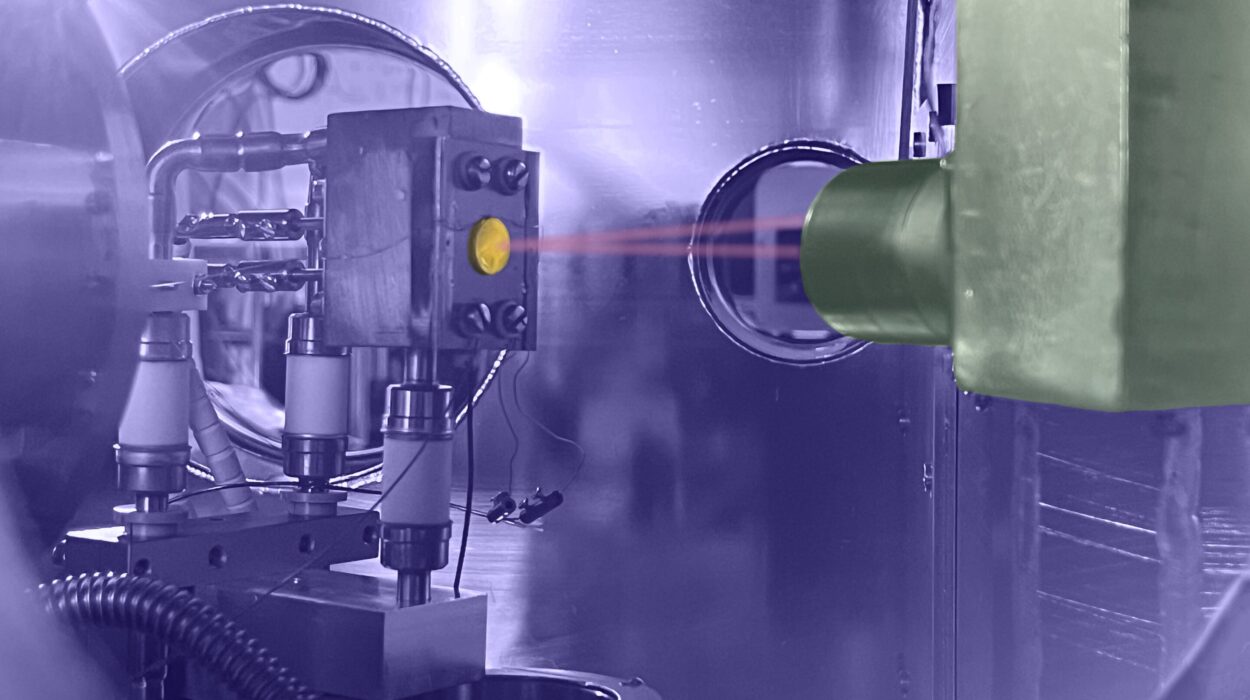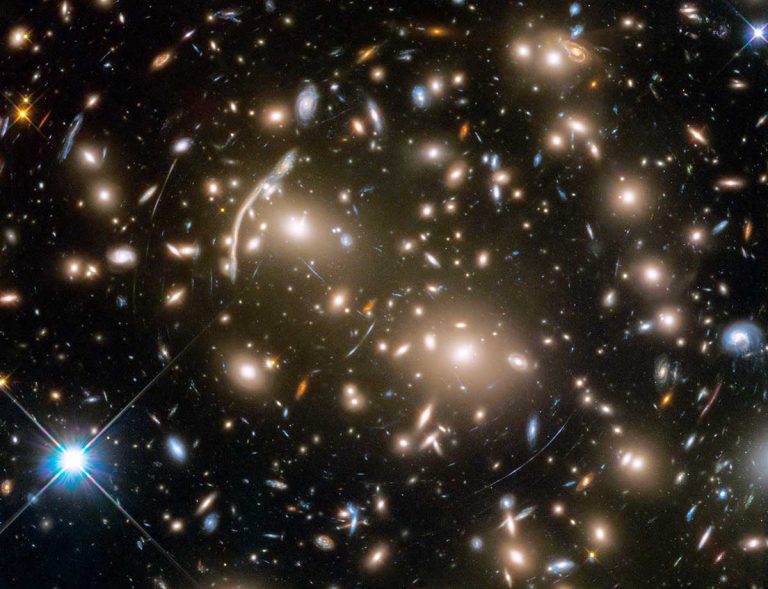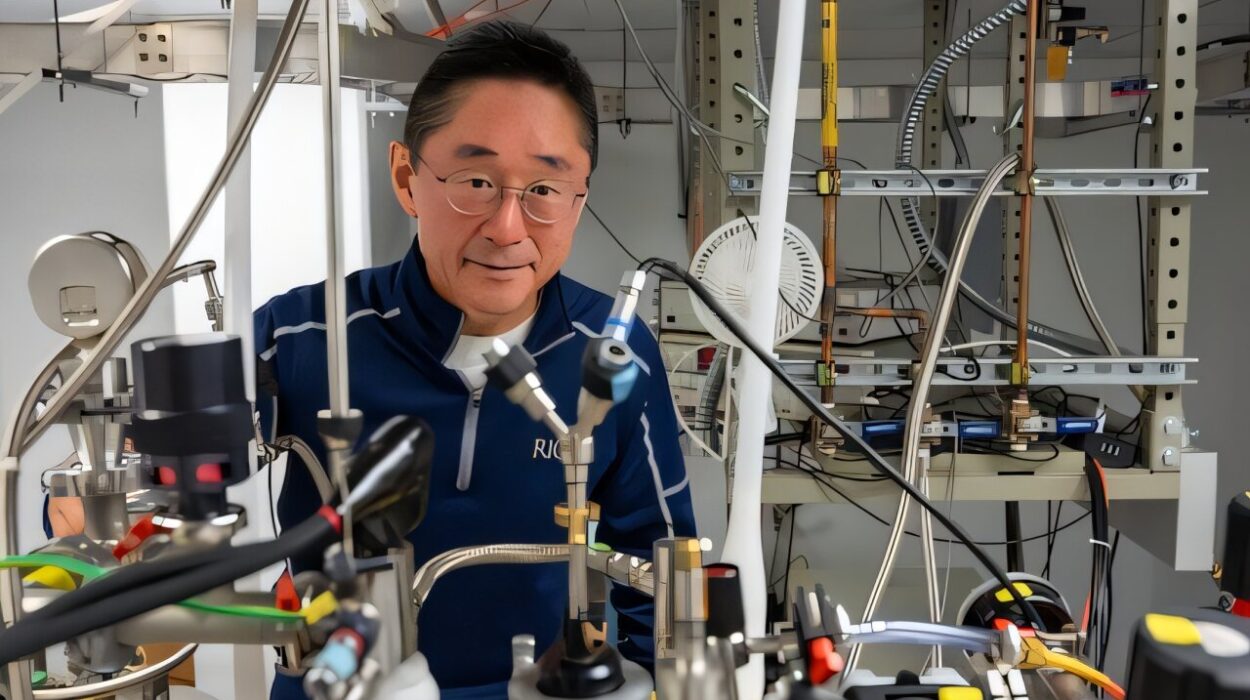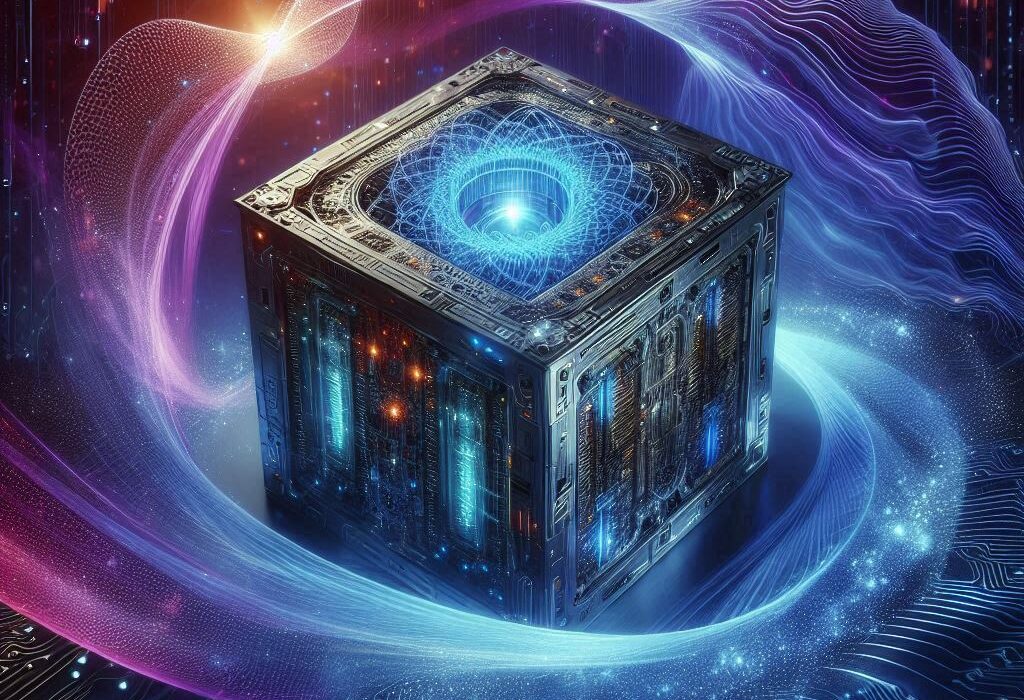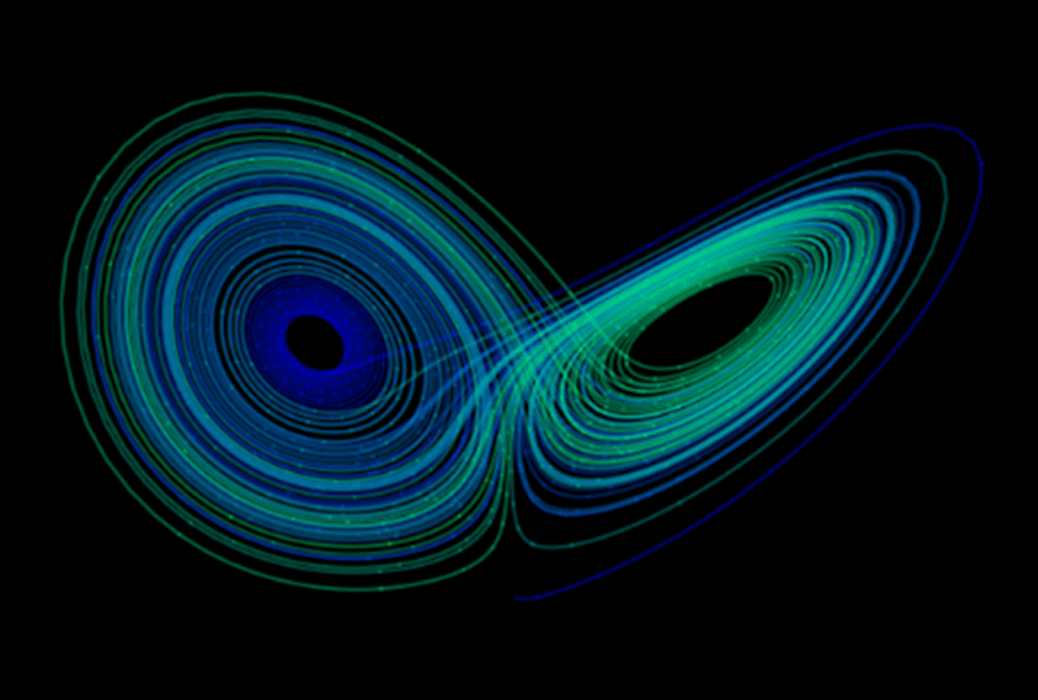Deep beneath the parched surface of Chile’s Atacama Desert—a place so dry it resembles Mars more than Earth—emerald-green crystals quietly glint under the sun. These are atacamite, a copper-rich mineral that has fascinated collectors for centuries with its vivid color and perfect geometric forms.
But to physicists, atacamite holds a different kind of beauty: the kind that reveals itself not through the eye, but through the strange, invisible dance of magnetic fields. And now, researchers from TU Braunschweig and the Helmholtz-Zentrum Dresden-Rossendorf (HZDR) have discovered that this crystal, forged by the Earth and shaped by time, harbors a remarkable secret: it gets dramatically colder when exposed to a magnetic field.
The finding, published in Physical Review Letters, could unlock a new path toward environmentally friendly, energy-efficient cooling—by using magnetism instead of machines.
Magnetic Frustration: The Delicate Balance Inside Atacamite
At the heart of atacamite’s behavior is copper, the very element that gives it its color. Each copper ion has an unpaired electron, which spins like a tiny planet on its axis, creating a magnetic moment—an atomic-scale version of a compass needle. But unlike neat rows of aligned magnets on a fridge door, the magnetic moments in atacamite are tangled in a complicated geometry.
“They form long chains of little triangles, called sawtooth chains,” explained Dr. Leonie Heinze of the Jülich Center for Neutron Science. “Because of this triangular structure, the copper ions can’t align their magnetic moments the way they ‘want’ to. They’re locked in conflict.”
This peculiar situation is known as magnetic frustration—a concept in physics where competing interactions prevent a system from settling into a simple, low-energy configuration. Instead, the spins remain disordered, like dancers who keep missing the beat of the music.
Atacamite only finds a sort of order when it’s chilled to the extreme—below 9 Kelvin (−264°C). At those ultra-low temperatures, the material adopts a fragile, alternating spin arrangement. But when exposed to high magnetic fields, something even stranger happens.
Cooling with Magnetism: A Rare and Powerful Effect
In the High Magnetic Field Laboratory (HLD) at HZDR, the team subjected atacamite to intense pulsed magnetic fields. What they observed was nothing short of astonishing: the mineral’s temperature plummeted to nearly half of its original value.
This phenomenon is known as the magnetocaloric effect—a process where a material heats up or cools down when placed in a changing magnetic field. While this effect is known in other substances, atacamite’s dramatic cooling was both unexpected and unusually strong.
“Most magnetocaloric materials have been studied for decades,” said Dr. Tommy Kotte, a physicist at HLD. “But what we saw in atacamite was a kind of performance we didn’t anticipate, especially because frustrated magnetic materials like this one typically don’t behave that way.”
It turned out that when the magnetic field was applied, it didn’t just nudge the spins into alignment—it disrupted their fragile order entirely, unraveling the complex structure that existed only in the coldest conditions.
Why Does a Rock Get Colder in a Magnetic Field?
To understand what was happening, the researchers teamed up with computational physicists to create detailed simulations of atacamite’s magnetic behavior. They discovered that the copper ions at the tips of the sawtooth chains—usually responsible for connecting different magnetic chains—were being realigned by the field. This broke their links to neighboring chains, eliminating the material’s long-range magnetic order.
When this order disappears, the system’s magnetic entropy—a measure of disorder—increases dramatically. In physics, when entropy rises suddenly, a system often tries to compensate by lowering its temperature. That’s exactly what atacamite did.
“The stronger the disruption of magnetic order, the stronger the temperature drop,” said Kotte. “It’s the disorder itself that drives the cooling.”
This is not just a laboratory curiosity—it’s a profound insight into how energy can be transferred and controlled through magnetism alone, without the need for gas compression or expansion, which is how most refrigerators and air conditioners work today.
A Glimpse Into the Future of Cooling
Magnetocaloric materials offer a tantalizing alternative to traditional refrigeration. Instead of relying on greenhouse gases or bulky compressors, future cooling systems could use magnetic fields to do the job—cleaner, quieter, and more efficient.
But don’t expect to see atacamite crystals powering your next fridge.
“We don’t expect atacamite to be mined on an industrial scale,” Kotte said. “But the mechanism we’ve observed is fundamentally new. It tells us where to look next.”
The researchers hope that this discovery will spark a wider search for other magnetically frustrated materials that could offer even better magnetocaloric performance. Nature has a vast library of such systems, many still unexplored, waiting in deep caverns or ancient rock formations.
From Ancient Crystals to Modern Innovation
What began as a curiosity about an old desert mineral has become a window into the future of sustainable technology. In atacamite’s internal chaos—its frustrated spins and delicate balance—scientists have found order, possibility, and potential.
It’s a reminder that the Earth, in its quiet way, holds secrets that could reshape how we live. Crystals grown in silence over millennia might someday cool our homes, power our machines, or change how we think about energy itself.
And all it takes to unlock them is a little magnetism, a lot of patience, and the courage to look beyond what we see.
Reference: L. Heinze et al, Atacamite Cu2Cl(OH)3 in High Magnetic Fields: Quantum Criticality and Dimensional Reduction of a Sawtooth-Chain Compound, Physical Review Letters (2025). DOI: 10.1103/PhysRevLett.134.216701
